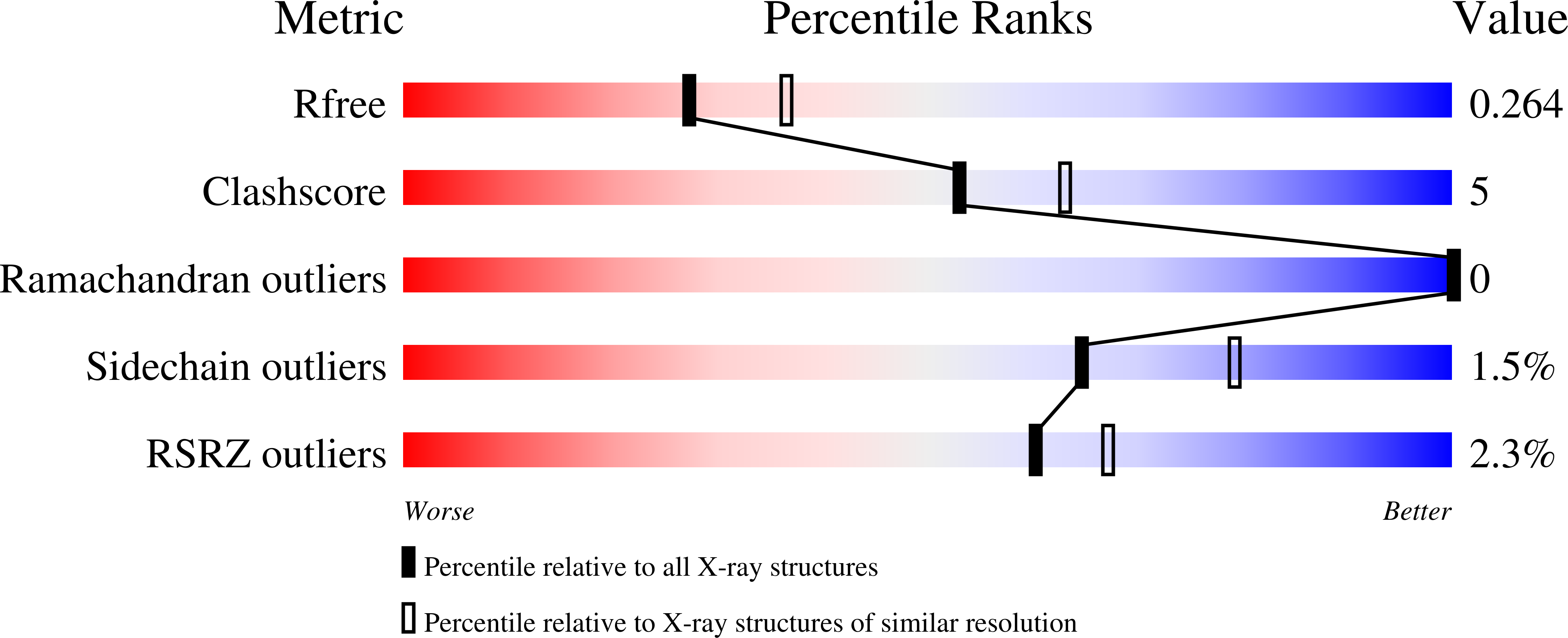A molecular sensor determines the ubiquitin substrate specificity of SARS-CoV-2 papain-like protease.
Patchett, S., Lv, Z., Rut, W., Bekes, M., Drag, M., Olsen, S.K., Huang, T.T.(2021) Cell Rep 36: 109754-109754
- PubMed: 34547223
- DOI: https://doi.org/10.1016/j.celrep.2021.109754
- Primary Citation of Related Structures:
7LFU, 7LFV - PubMed Abstract:
The SARS-CoV-2 papain-like protease (PLpro) is a target for antiviral drug development. It is essential for processing viral polyproteins for replication and functions in host immune evasion by cleaving ubiquitin (Ub) and ubiquitin-like protein (Ubl) conjugates. While highly conserved, SARS-CoV-2 and SARS-CoV PLpro have contrasting Ub/Ubl substrate preferences. Using a combination of structural analyses and functional assays, we identify a molecular sensor within the S1 Ub-binding site of PLpro that serves as a key determinant of substrate specificity. Variations within the S1 sensor specifically alter cleavage of Ub substrates but not of the Ubl interferon-stimulated gene 15 protein (ISG15). Significantly, a variant of concern associated with immune evasion carries a mutation in the S1 sensor that enhances PLpro activity on Ub substrates. Collectively, our data identify the S1 sensor region as a potential hotspot of variability that could alter host antiviral immune responses to newly emerging SARS-CoV-2 lineages.
Organizational Affiliation:
Department of Biochemistry & Molecular Pharmacology, New York University School of Medicine, New York, NY 10016, USA.





















